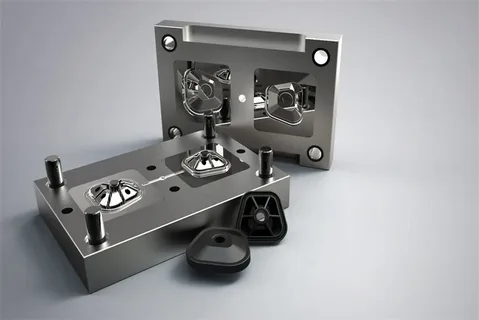Plastic injection molding is a widely used manufacturing process for producing high-volume plastic parts with precision. It involves injecting molten plastic into a mold cavity, where it cools and solidifies into the desired shape. The process is ideal for industries such as automotive, consumer goods, medical devices, and electronics due to its efficiency and cost-effectiveness.
To achieve high-quality products, designers must consider factors like material selection, mold design, and processing conditions. Poorly designed molds can lead to defects such as warping, sink marks, and flash. A thorough understanding of the fundamentals of plastic injection molding helps prevent such issues, ensuring superior product quality and durability.
Optimizing Wall Thickness for Uniformity
One of the most crucial design aspects in plastic injection molding is maintaining uniform wall thickness. Inconsistent thickness can cause problems such as uneven cooling, internal stress, and warping. When designing a part, it is essential to maintain a consistent wall thickness to ensure smooth material flow and avoid defects.
A general rule of thumb is to keep wall thickness between 1.2mm and 3mm, depending on the material used. Thinner walls cool faster but may be prone to breakage, while excessively thick walls can lead to shrinkage issues. By optimizing wall thickness, designers can improve product strength, reduce cycle times, and minimize material waste.
Incorporating Proper Draft Angles
Draft angles are essential in plastic injection molding to facilitate the easy removal of parts from the mold. Without adequate draft angles, parts may stick to the mold, leading to defects and increased production downtime. Generally, a draft angle of 1 to 3 degrees is recommended, though this may vary based on part geometry and surface finish requirements.
Proper draft angles also enhance the mold’s lifespan by reducing wear and tear. Ensuring an appropriate draft angle reduces ejection force and prevents surface damage, leading to higher quality products and more efficient manufacturing operations.
Avoiding Sharp Corners and Stress Concentration
Sharp corners in plastic injection molding designs can lead to stress concentration, which increases the likelihood of part failure. When molten plastic flows into a mold, sharp corners create resistance, causing uneven material distribution and potential weaknesses in the final product.
To prevent these issues, designers should incorporate fillets or rounded edges instead of sharp corners. A minimum radius of 0.5 times the wall thickness is recommended to improve material flow and enhance part durability. This small adjustment significantly increases structural integrity while reducing the risk of defects.
Selecting the Right Material for Optimal Performance
Material selection plays a critical role in achieving high-quality plastic injection molded products. Different plastics offer varying properties such as strength, flexibility, heat resistance, and chemical compatibility. Common materials used in injection molding include ABS, polycarbonate, polypropylene, and nylon.
To ensure the best performance, designers must consider the application requirements and environmental conditions of the final product. Choosing the appropriate material enhances product longevity, reduces defects, and ensures compliance with industry standards. Collaborating with material suppliers and conducting tests can further refine material selection for superior results.
By following these essential design tips, manufacturers can optimize plastic injection molding processes, ensuring the production of high-quality and reliable products. Proper planning and attention to detail in mold design and material selection lead to improved efficiency, cost savings, and customer satisfaction.

